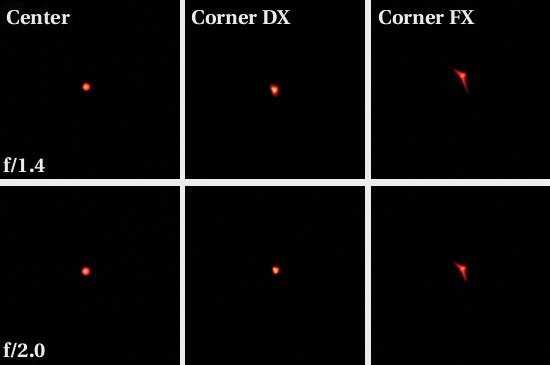Nikon Nikkor AF-S 50 mm f/1.4G
7. Coma and astigmatism
Please Support UsIf you enjoy our reviews and articles, and you want us to continue our work please, support our website by donating through PayPal. The funds are going to be used for paying our editorial team, renting servers, and equipping our testing studio; only that way we will be able to continue providing you interesting content for free. |
- - - - - - - - - - - - - - - - - - - - - - - - - - - - - - - - - - - - - - - - - - - - - - - -
Coma correction was the feature distinguishing Nikkor from the older models. For fast 50 mm lenses coma is a serious problem and even an expensive Zeiss Planar failed to eliminate it. Considering all this we must admit that the Nikkor results are not bad, although it is obvious that the level of this kind of aberration is not low. It is seen even if you close the aperture by one stop. A much better result is obtained in the DX matrix corner, where coma can still be observed at wide open aperture but disappears almost completely around f/2.0.

You can only praise the lens when it comes to astigmatism. On a small matrix, the medium difference between the vertical and lateral MTF50 is just 2.4% which is an insignificant result. On full frame, the astigmatism increases to 6% because of the difference in the sharpness measurement field positions but it’s still a highly satisfying level which won’t destroy our good mood.






